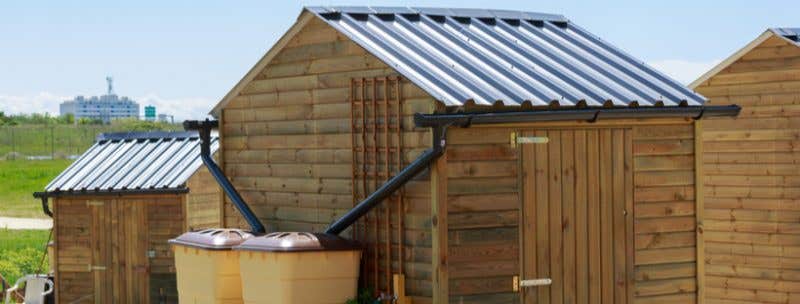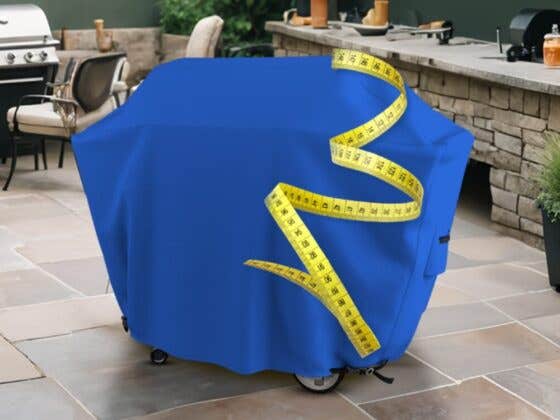Every homeowner wants to have a lawn that makes the entire neighborhood green with envy. That’s easier said than done due to the cost of supplies and sheer volume of water needed to create that picturesque yard. By implementing rainwater harvesting techniques, however, you can cut down on the cost without sacrificing any lush green.
Barreling Along

Taking the barrel approach to rainwater harvesting presents a variety of questions, not the least of which are: How do I collect rainwater? Which barrel collects water most effectively?
Unlike sofa covers, there’s no one-size-fits-all solution to choosing a barrel. You can however, approach this task by selecting materials that are both cost effective and recyclable. Your first order of business, however, is to consider the size of the space you’re allotting for rainwater collection.
Location, Location, Location
Start by factoring in all the eccentricities of your own backyard. Once you’ve located the best spots for collecting rainwater it comes down to choosing the most accessible spot from your list of options as well as the optimal size of the barrel for that spot – and for you as well. After all, a container filled to its brim can weigh close to 300 pounds. The last thing you need is to be dealing with having to move that much weight around.
Access Granted
At your local hardware store, you can find a water barrel with a narrow inlet and outlet hole on the lid. Using a low-force pump, you can quickly maneuver water in and out of barrels for gardening and grooming as needed.
You can even protect your barrels by using a tarpaulin sheet or machine cover in order to further fend off falling debris or external weather conditions. Utilizing a custom tarp in a darker color can even prevent extra light from penetrating the surface, reducing the internal temperature of the barrel and thus reduces the risk of algae or moss forming.
All Rainwater Collection Systems Go

With the basics out of the way, you can now dive into constructing your rainwater collection system.
This system involves building a collection system that leads to a filtration receptacle. That receptacle can be a barrel, a bladder beneath your yard – there are many possibilities. As rain is collected from your rooftop, it is brought down into your chosen water storage unit, where it can then be pumped out as needed.
You’ve got Slope
Start by examining the slope of your house and that your collection location is not uphill. Otherwise, the water won’t flow toward it but rather away. The aim is to ensure water isn’t allowed to collect on your roof due to an incorrect estimation.
In the Gutter
Install a pipe and gutter system along the edges of the roof to help divert the water to a common point. Ensure that all the gutters remain sloped towards a single end of the house to ensure a smooth water flow.
We’re All Just Looking for Connection
Connect the ends of the pipe to a large barrel to ensure water does not leak. Now your roof is supplying your collection point with water each time it rains.
Finally, connect a supply pipe to the barrel and use a small motor or water pump to set up an outlet system. Now when you need water, your free supply is ready and waiting. Remember to remain cautious when working with electrical wires and engines to ensure the safety of the machine and yourself. Use a tarpaulin or machine cover if needed.
The Cost Benefits of Saving Water

If you’re still not completely sold on the necessity of a rainwater harvesting system, there are many cost and environmental benefits that just might change your mind.
- Daily Use Costs: Washing your car or watering your garden are chores that require a lot of water regularly. Using rainwater can help reduce your overall consumption of water and bring down monthly expenses.
- Cope with Demand: During dry season or in regions where droughts are common, the scarcity of water can be concerning. Harvesting rainwater helps you stay ahead of any worry. If you fill up one barrel in the rainy season, buy another and fill that up too!
- Promotes Frequent Home Check-Ups: Maintaining a rainwater harvesting system requires regular checks of the roof slants and gutters. Any interruption of the rainwater storage helps flag roof and drainage irregularities.
- Lessen the Chance of Water-Damage: The use of rainwater harnessing systems will also ensure the water remains diverted. Thus, lessening the chance of water damage to your property.
- Emergency Source: During a crisis, you can be assured that you have a source of water should you need it.
The Secret (Rain) Garden

Take your water harvesting one step further by putting all these pieces together but bypassing the barrel and instead create a practical point of interest for your yard. A rain garden is an incredible feat of rainwater harvesting. All it takes is a little ingenuity in your process.
Slope: Ensure the position of the rain garden is away from the home. Make certain that the slope of the garden floor leads towards the rain garden.
Boundaries: Create a small border, with stones or rocks, around the garden. This wall will help manage the flow of water to plants as it trickles down.
Identifying Markers: Ensure you label the pipeline so future renovations and constructions do not damage it.
Location: Keep your rain garden around 10 feet from your house. Water can overflow during heavy rain making it prudent that you protect any nearby furniture with patio furniture cushion covers.
Build Quality: Ensure you use high-grade piping to build the pathway. Frequent flow and maintenance can be expensive if not properly done.
Plants: Ditch delicate flowers for sturdy blooms with deep roots.

















Recent Comments